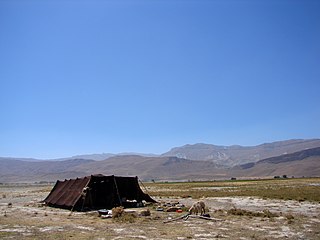 W
WPastoralism is a form of animal husbandry where domesticated animals known as livestock are released onto large vegetated outdoor lands (pastures) for grazing, historically by nomadic people who moved around with their herds. The species involved include cattle, camels, goats, yaks, llamas, reindeer, horse and sheep.
 W
WThe Adoration of the Shepherds, in the Nativity of Jesus in art, is a scene in which shepherds are near witnesses to the birth of Jesus in Bethlehem, arriving soon after the actual birth. It is often combined in art with the Adoration of the Magi, in which case it is typically just referred to by the latter title. The Annunciation to the Shepherds, when they are summoned by an angel to the scene, is a distinct subject.
 W
WThe Bakhtiari are a southwestern Iranian tribe, and a subgroup of the Lurs. They speak the Bakhtiari dialect, a southwestern Iranian dialect, belonging to the Luri language.
 W
WThe Bedouin or Bedu is a population of nomadic Arabs who have historically inhabited the desert regions in North Africa, the Arabian Peninsula, Upper Mesopotamia and the Levant. The English word bedouin comes from the Arabic badawī, which means "desert dweller", and is traditionally contrasted with ḥāḍir, the term for sedentary people. Bedouin territory stretches from the vast deserts of North Africa to the rocky sands of the Middle East. They are traditionally divided into tribes, or clans, and historically share a common culture of herding camels and goats. The vast majority of Bedouin adhere to Islam, although there are some fewer numbers of Arab Christian Bedouins present in the Fertile Crescent.
 W
WA buttero or cavalcante is a mounted herder, usually of horses, of cattle, or of buffaloes, in Italy, predominantly in the Maremma region of Tuscany and northern Lazio, or in the Pontine Marshes to the south.
 W
WA campino is a cattle herder in the Portuguese region of Ribatejo.
 W
WThe Changpa or Champa are a semi-nomadic Tibetan people found mainly in the Changtang in Ladakh and in Jammu and Kashmir. A smaller number resides in the western regions of the Tibet Autonomous Region and were partially relocated for the establishment of the Changtang Nature Reserve. As of 1989 there were half a million nomads living in the Changtang area.
 W
WA charro is a traditional horseman from Mexico, originating in the central regions primarily in the states of Hidalgo, Nayarit, Jalisco, Colima, Michoacán, Zacatecas, Durango, Chihuahua, Aguascalientes, Querétaro, Guanajuato and Mexico State. The vaquero and ranchero are similar to the charro but different in culture, etiquette, mannerism, clothing, tradition and social status. The inhabitants of southern Salamanca, the province of Spain, are also called "charros". Among these, the inhabitants of the regions of Alba, Vitigudino, Ciudad Rodrigo and Ledesma are specifically known for their traditional "ganadería" heritage and colorful glitzy clothing.
 W
WA cowboy is an animal herder who tends cattle on ranches in North America, traditionally on horseback, and often performs a multitude of other ranch-related tasks. The historic American cowboy of the late 19th century arose from the vaquero traditions of northern Mexico and became a figure of special significance and legend. A subtype, called a wrangler, specifically tends the horses used to work cattle. In addition to ranch work, some cowboys work for or participate in rodeos. Cowgirls, first defined as such in the late 19th century, had a less-well documented historical role, but in the modern world work at identical tasks and have obtained considerable respect for their achievements. Cattle handlers in many other parts of the world, particularly South America and Australia, perform work similar to the cowboy.
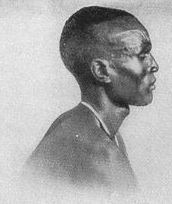 W
WThe Dinka people are a Nilotic ethnic group native to South Sudan with a sizable diaspora population abroad. The Dinka mostly live along the Nile, from Bor to Renk, in the region of Bahr el Ghazal, Upper Nile (two out of three Provinces which were formerly located in southern Sudan, and the Abyei Area of the Ngok Dinka in South Sudan.
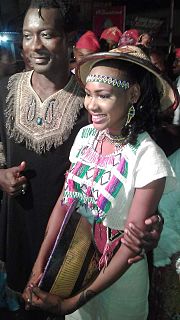 W
WFulani herdsmen or Fulani pastoralists are nomadic or semi-nomadic Fulani people whose primary occupation is raising livestock. The Fulani herdsmen are largely located in the Sahel and semi-arid parts of West Africa, but due to relatively recent changes in climate patterns, many herdsmen have moved further south into the savannah and tropical forest belt of West Africa. The herdsmen are found in countries such as Nigeria, Niger, Senegal, Guinea, Mauritania, Mali, Burkina Faso, Ghana, Benin, Côte d'Ivoire, and Cameroon. In Senegal, they inhabit northeastern Ferlo and the southeastern part of the country. In many of these countries the Fula often constitute a minority group,
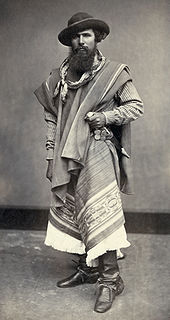 W
WA gaucho or gaúcho is a skilled horseman, reputed to be brave and unruly. The gaucho is a national symbol in Argentina and Uruguay, but is also a strong culture in Paraguay and southern Brazil, Bolivia and Chile. Gauchos became greatly admired and renowned in legends, folklore and literature and became an important part of their regional cultural tradition. Beginning late in the 19th century, after the heyday of the gauchos, they were celebrated by South American writers.
 W
WA goatherd or goatherder is a person who herds goats as a vocational activity. It is similar to a shepherd who herds sheep. Goatherds are most commonly found in regions where goat populations are significant; for instance, in Africa and South Asia. Goats are typically bred as dairy or meat animals, with some breeds being shorn for wool. The top six goat industry groups in the United States include: meat, dairy, fiber or hair, 4-H, industrial, and biotech.
 W
WThe gulyás is the traditional mounted cattle-herdsman of Hungary. The gulyás tradition is associated with the Hungarian puszta and with the Hungarian Grey or Hungarian Steppe breed of Podolic cattle, Hungarian: Magyar szürke szarvasmarha, now considered a meat breed but formerly used as oxen. Gulyás is the origin of the word goulash.
 W
WGurjar or Gujjar is an ethnic agricultural and pastoral community of India, Pakistan, and Afghanistan. They were known as Gurjaras during the medieval times, a name which is believed to have been an ethnonym in the beginning as well as a demonym later on. Although traditionally they have been involved in agriculture, Gurjars are a large heterogeneous group that is internally differentiated in terms of culture, religion, occupation, and socio-economic status. The historical role of Gurjars has been quite diverse in society, at one end they have founded kingdom, districts, cities, towns, and villages, and at the other end, they are also nomads with no land of their own.
 W
WThe Himba are indigenous peoples with an estimated population of about 50,000 people living in northern Namibia, in the Kunene Region and on the other side of the Kunene River in southern Angola. There are also a few groups left of the OvaTwa, who are also OvaHimba, but are hunter-gatherers. However, the OvaHimba do not like to be associated with OvaTwa. Culturally distinguishable from the Herero people, the OvaHimba are a semi-nomadic, pastoralist people and speak OtjiHimba, a variety of Herero, which belongs to the Bantu family within Niger–Congo. The OvaHimba are semi-nomadic as they have base homesteads where crops are cultivated, but may have to move within the year depending on rainfall and where there is access to water.
 W
WA huaso is a Chilean countryman and skilled horseman, similar to the American cowboy or Mexican charro, the gaucho of Argentina, Uruguay and Rio Grande Do Sul and the Australian stockman. A female huaso is called a huasa, although the term china is far more commonly used for his wife or sweetheart, whose dress can be seen in cueca dancing. Huasos are found all over Central and Southern Chile while the Aysén and Magallanes Region sheep raisers are gauchos. The major difference between the huaso and the gaucho is that huasos are involved in farming as well as cattle herding.
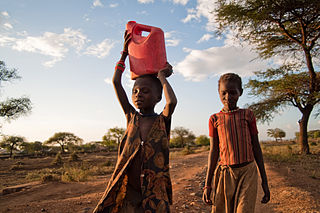 W
WThe Karamojong or Karimojong are a Nilotic ethnic group. They are agro-pastoral herders living mainly in the north-east of Uganda. Their language is also known as Karamojong or Karimojong and is part of the Nilotic language family.
 W
WA lienzo charro is an arena where charros hold the events of charreada, coleadero and jaripeo. American rodeo events may also take place at a lienzo charro.
 W
WThe Luo are several ethnically and linguistically related Nilotic ethnic groups that inhabit an area ranging from South Sudan and Ethiopia, through Northern Uganda and eastern Congo (DRC), into western Kenya, and the Mara Region of Tanzania. Their Luo languages belong to the western branch of the Nilotic language family.
 W
WMohammad Khanlu (Moḥammad-Ḵānlū) is one of the six major Tribes of Arasbaran. It is a Turkicized Kurdish tribe dwelling for the most part in the Arasbaran region, in East Azerbaijan Province of Iran. Its summer quarters were around Marzrud and its winter quarters were around Heydarkanlu village of Khoda Afarin County. According to A. Lampton, in Arasbaran the pasturage belonged to Khans, who also owned arable land in winter quarters.
 W
WThe Mucubal people are a subgroup of the Herero people in southern Angola. Like the Masai, to whom they are said to be related, they are semi-nomadic, depending on cattle and agriculture. Their territory is in the Namib Desert, bounded by the Serra da Chela mountains to the north and Cunene River to the south.
 W
WThe Mandari are a small ethnic group of South Sudan and part of the Karo people one of the Nilotic peoples.
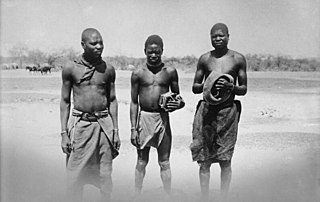 W
WThe Ovambo people ,also called Aawambo, Ambo, Aawambo, or Ovawambo (Kwanyama), are a Bantu ethnic group native to Southern Africa, primarily modern Namibia. They are the single largest ethnic group in Namibia, accounting for about half of the population. They are also found in southern Angolan province of Cunene where they are more commonly referred to as "Ambo". The Ovambo consist of a number of kindred Bantu ethnic tribes who inhabit what was formerly called Ovamboland. In Angola, they are a minority, accounting for about two percent of the total Angolan population.
 W
WThe Pechenegs or Patzinaks were a semi-nomadic Turkic people from Central Asia speaking the Pecheneg language which belonged to the Oghuz branch of the Turkic language family.
 W
WQashqai is a conglomeration of clans in Iran consisting of mostly Turkic peoples but also Lurs, Kurds and Arabs. Almost all of them speak a Western Oghuz Turkic dialect known as the Qashqai language, which they call "Turki", as well as Persian in formal use. The Qashqai mainly live in the provinces of Fars, Khuzestan, Kohgiluyeh and Boyer-Ahmad, Chaharmahal and Bakhtiari, Bushehr and Southern Isfahan, especially around the cities of Shiraz and Firuzabad in Fars. The majority of Qashqai people were originally nomadic pastoralists and some remain so today. The traditional nomadic Qashqai travelled with their flocks twice yearly to and from the summer highland pastures north of Shiraz roughly 480 km or 300 miles south to the winter pastures on lower lands near the Persian Gulf, to the southwest of Shiraz. The majority, however, have now become partially or wholly sedentary. The trend towards settlement has been increasing markedly since the 1960s.
 W
WThe Saho are an ethnic Cushitic peoples inhabiting the Horn of Africa. They are principally concentrated in Eritrea, with some also living in adjacent parts of Ethiopia. They speak Saho as a mother tongue, which belongs to the Cushitic branch of the Afroasiatic family and is closely related to all.
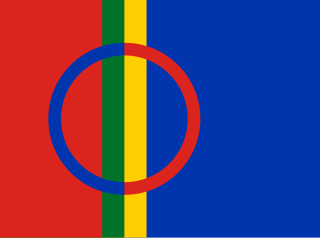 W
WThe Sámi people are an indigenous Finno-Ugric people inhabiting Sápmi, which today encompasses large northern parts of Norway, Sweden, Finland and the Kola Peninsula within the Murmansk Oblast of Russia. The Sámi have historically been known in English as Lapps or Laplanders, but these terms are regarded as offensive by some Sámi people, who prefer the area's name in their own language, "Sápmi". Sámi ancestral lands are in the Volga region, in present-day Russia, like other Uralic peoples. Their traditional languages are the Sámi languages, which are classified as a branch of the Uralic language family.
 W
WA shepherd or sheepherder is a person who tends, herds, feeds, or guards herds of sheep. Shepherd derives from Old English sceaphierde.
 W
WSomalis are an ethnic group belonging to the Cushitic peoples native to Greater Somalia. The overwhelming majority of Somalis speak the Somali language, which is part of the Cushitic branch of the Afroasiatic family. They are predominantly Sunni Muslim. Ethnic Somalis are principally concentrated in Somalia, Ethiopia, Kenya, and Djibouti (534,000). Somali diasporas are also found in parts of the Middle East, North America, Western Europe, African Great Lakes region, Southern Africa and Oceania.
 W
WIn the history of Southern Africa, the Trekboere were nomadic pastoralists descended from European settlers on the frontiers of the Dutch Cape Colony. The Trekboere began migrating into the interior from the areas surrounding what is now Cape Town, such as Paarl, Stellenbosch, and Franschhoek, during the late 17th century and throughout the 18th century. The Trekboer included mixed-race families of partial Khoikoi descent who had also become established within the economic class of burghers.
 W
WArasbaran, also known as Karadagh in Azerbaijani language (قرهداغ) is a vast mountainous area in the north of East Azarbaijan Province in Iran. In this area there were several Turkic tribes, including the Beghdillu, Chalabianlu, Haji-Alilu, Mohammad Khanlu, Hoseynaklu, Hasanbeyglu, Ilyaskhanlu, Tokhmaqlu, Bayburdlu, Qaradaghlu, and Qarachorlu. All of these tribes are now sedentary, but characteristic aspects of their culture, developed around nomadic pastoralism, have persisted to our times.
 W
WThe Turkana are a Nilotic people native to the Turkana County in northwest Kenya, a semi-arid climate region bordering Lake Turkana in the east, Pokot, Rendille and Samburu people to the south, Uganda to the west, and South Sudan and Ethiopia to the north. They refer to their land as Turkan.
 W
WThe Vaqueiros de Alzada are a northern Spanish nomadic people in the mountains of Asturias and León, who traditionally practice transhumance, i.e. moving seasonally with cattle.
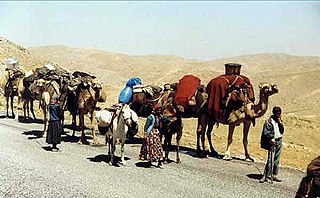 W
WThe Yörüks, also Yuruks or Yorouks, are a Turkish ethnic subgroup of Oghuz descent, some of whom are nomadic, primarily inhabiting the mountains of Anatolia, and partly in the Balkan peninsula. On the Balkans Yörüks are distributed over a wide area from southern Serbia, parts of Bulgaria, north to Larissa in Thessaly and southern Thrace. Their name derives from the Turkish verb yürü-, which means "to walk", with the word yörük or yürük designating "those who walk on the hindlegs, walkers". Yörüks lived within the Yörük Sanjak which was not a territorial unit like other sanjaks but a separate organisational unit of the Ottoman Empire.